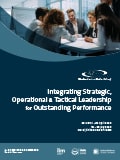Um curso de formação intensivo de desenvolvimento profissional sobre
Advanced Investment
Appraisal Workshop
Considering Both Financing and Operating Effects
Porquê escolher este curso de formação?
In today’s challenging environment it is important for businesses to maintain their competitive position. They need to ensure that they are offering attractive, up-to-date, high quality products to their customers. A company that was successful in 2016 cannot assume that their success will continue through to 2020, unless they are prepared to make new investments on a regular basis. This advanced training workshop builds on the skills and knowledge acquired in the Investment Appraisal Training workshop to incorporate two important additional factors. The first is how to incorporate the change in risk when a company diversifies into new activities, using the Capital Asset Pricing Model. The second is how to incorporate the effect of different financing structures, and their tax consequences, on the value and acceptability of the project. The training workshop will comprise the following key elements:
- Overview of the basic principles of Net Present Value and Weighted Average Cost of CapitaI (WACC) calculations, as used in normal investment appraisal
- Explanation of the Modigliani and Miller theory, that ‘ WACC will be the same at all levels of gearing’ and why this should be modified to incorporate the benefit of tax savings.
- How to identify the risk level of a diversification project, incorporate its effect into an adjusted WACC, and calculate a risk-adjusted NPV.
- Identifying and calculating the present value of tax savings relating to term loans, instalment loans, and subsidized loans, and incorporating these into Adjusted Present Value (APV) evaluations.
- Separating the project cash flows into ‘risky’ and ‘risk-free’, assessing the value of ‘unused debt capacity’, and applying suitable discount rates to produce the APV.
Quais são os objectivos?
By the end of this training workshop, participants will be able to:
- Understand why it is important for us to consider, and accurately evaluate, all of the consequential effects of investing in new projects
- Break down any new investment project into all of the significant elements that should be separately evaluated to produce an accurate summary of the value created – the Adjusted Present Value
- Accurately measure the beta risk value of a diversification project from available market information, and make necessary ungearing and regearing calculations to produce a risk-adjusted WACC
- Identify and evaluate the tax benefits of different forms of debt finance, and unused debt capacity, and incorporate these into an Adjusted Present Value calculation
- Distinguish risky from risk-free operating cash flows, and apply suitable discount rates to each, in producing the Adjusted Present Value
A quem se destina este curso de formação?
Who is this Training Workshop For?
This training workshop is suitable to a wide range of professionals but will greatly benefit:
- Management accounting staff
- Strategic planners
- Consultores de gestão
- Senior managers of any non-financial discipline
- Empresários
Como é que este curso de formação será apresentado?
How will this training workshop be presented?
This training workshop will utilize a variety of proven adult learning techniques to ensure maximum understanding, comprehension and retention of the information presented. This includes:
- Clearly presented case study material to illustrate important techniques
- Opportunities for delegates to input personal knowledge and experience into group discussion sessions
- Use of Excel spreadsheets for collection and forecasting of data, and application of evaluation techniques
- Regular exercises and quizzes to check progress
- Groupwork and group presentations, with guided research
O conteúdo do curso
Day One: Identifying and Constructing Investment Proposals
- Review of the models for calculating Ke, Kd, and WACC
- Review of the Net Present Value calculation method
- Some more methods of dealing with risk in investment projects; expected value, maximin, minimax regret, standard deviation, co-efficient of variation, risk premium, payback period, finite horizon, certainty equivalent
- Measuring project risk by beta value, by ungearing company beta value
- Why using debt finance is good, according to traditional theory
- Why using debt finance brings no cost benefit, according to Modigliani and Miller(M&M) theory 1
Day Two: Evaluating the Investment Proposals
- Why using debt finance brings a tax saving benefit, according to Modigliani and Miller(M&M) theory 2
- Identifying the interest payment cash flows of different forms of debt capital – term loan, instalment loan, and the present value of tax savings on this
- Calculating the after tax saving in interest due to subsidized loans
- Identifying which operating cash flows are risky and which are risk-free
- What is debt capacity? What is its value? If debt capacity is unused does it still have value?
- Putting everything together in the Adjusted Present Value summary
O certificado
- AZTech Certificate of Completion for delegates who attend and complete the training workshop
QUER SABERMAIS SOBRE ESTE CURSO?
© 2024. O material publicado pela AZTech aqui apresentado está protegido por direitos de autor. Todos os direitos reservados. Qualquer cópia, distribuição, utilização, disseminação, descarregamento, armazenamento (em qualquer meio), transmissão, reprodução ou utilização não autorizada, no todo ou em parte, deste esquema do curso é proibida e constitui uma violação dos direitos de autor.



